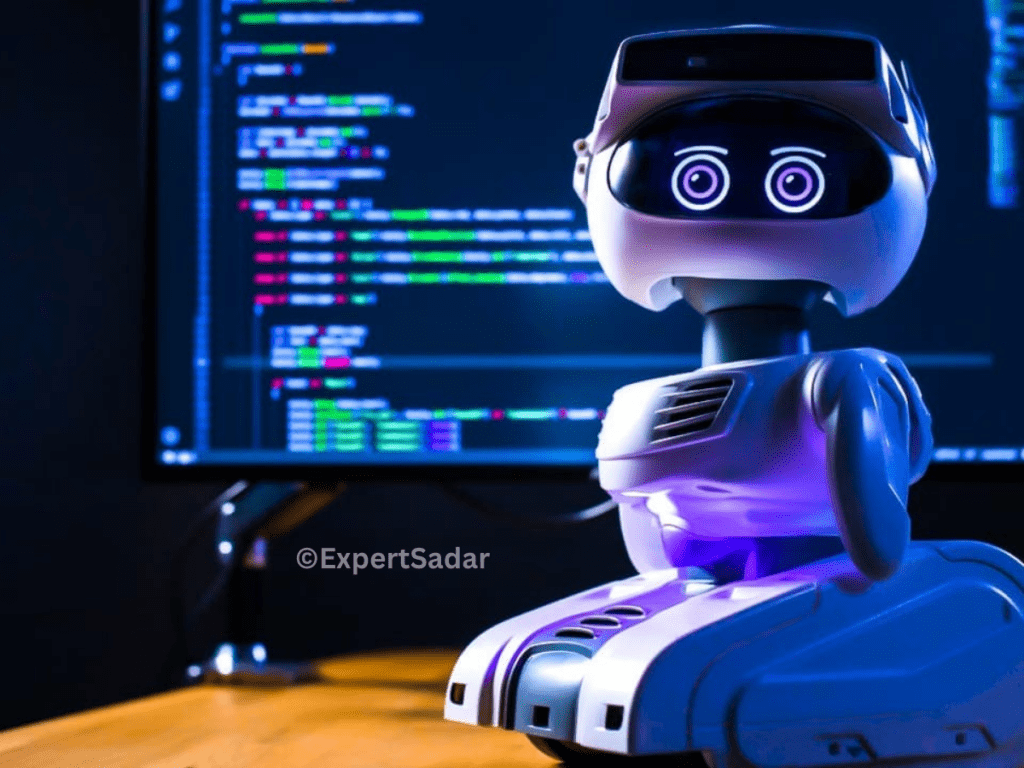The field of robotics is the fusion of science, engineering, and technology that creates devices, or robots, that replicate or supplant human behavior. Robots are perfect for sectors like manufacturing because they are more accurate and efficient than humans at basic, repetitive jobs. However, the integration of artificial intelligence with robotics has enabled robots to manage progressively intricate scenarios across multiple sectors.
What Is a Robot?
A robot is an automated device that may be programmed to do a task; the term robotics refers to the field of study concerned with creating robots and automation. Every robot is autonomous to varying degrees. These levels go from totally autonomous bots that complete tasks without the need for human intervention to human-controlled bots that carry out tasks. The word “robot” comes from the Czech word “robot,” which means “forced labor,” according to history. The term originally arose in the 1920 drama R.U.R., which revolved around people who were mass-produced laborers devoid of original thought.
What are some of the common types of robots?
Among the most common kinds of robots are:
Mobile Robots with Autonomy (AMRs):-
Autonomous mobile robots (AMRs) have been fitted with advanced sensors, AI, and machine learning to perform a wide range of jobs. These duties include delivery, security and safety inspections, inventory management, agricultural gathering, and even space exploration.
Automatically Guided Vehicles:-
Automated guided vehicles (AGVs) are moveable robots that can navigate established routes using radio waves, cameras, magnets, cables on the floor, or lasers. AGVs are a type of autonomous mobile robot. Since heavy material transportation in manufacturing facilities and storage facilities is just one usage for these robots.
Articulated Robots:-
Rotating joints, which can vary from basic two-jointed structures to intricate systems of several interacting joints and materials, are one of the primary characteristics of an articulated robot. Because One common kind of industrial robot is the articulated robot, which frequently duplicates a human arm.
Humanoids:-
A humanoid robot is shaped like a typical human body. Usually, a specialized design is employed to simulate human movements and interactions. Because Automating chores to improve productivity and reduce costs is a typical application for humanoid robots.
Cobots:-
A collaborative robot is referred to as a cobot. These robots collaborate with human employees. Their purpose is not to replace human workers, which sets them apart from other robots. Since they are often small and versatile, used in hospitals, laboratories, electronics, automobiles, and the metal sector.
Benefits of robotics:-
The various kinds of robots in use today are proof positive that the field of robotics has much to offer society as a whole. Typical advantages include:
- Human safety is enhanced when robots carry out jobs in hazardous areas
- Increased efficiency at work when complex or repetitive activities are handled by robots
- Higher precision in the workplace when robots carry out tasks that are prone to human error
- Lower labor costs when robots augment human labor by working longer shifts without the need for breaks and by improving accuracy without the chance of human error
- Less loneliness for those who live alone when robots help them personally
- Robotics drawbacks
A National Bureau of Economic Research study claims that wages are lowered by.25 to.50% for every 1,000 American workers that are replaced by robots. Because It reduces the ratio of employment to population by.18 to.34% [1]. Other disadvantages of robotics are as follows:
- Robots’ incapacity to engage in critical thought
- The incapacity of robots to deal with unforeseen situations
- Robots that handle customer service jobs lack empathy
- The price of new robot-related training for employees
- Security dangers related to robot intrusion
- In which industries are robots being used?
- Robotics is being used by several sectors to improve their operations. Among the most well-liked sectors are:
Agriculture
For agricultural enterprises, robotics has emerged as a sustainable way to satisfy rising worldwide demand. Farmers use specialized autonomous robots to carry out daily chores like harvesting, weed and pest control, and planting.

Construction:-
With autonomous technologies that enhance productivity, precision, and safety on building sites, robots help construction workers. New advances in robotics are enabling construction businesses to perform specialized activities like welding, drilling, and bricklaying autonomously, as well as run large construction machines like dozers and diggers.
Energy:-
Robots are being used by the energy sector to maintain and inspect remote installations for security. Because robotics reduces the costs associated with system installation and maintenance, it has thus contributed significantly to the growing affordability of sustainable energy.
Healthcare:-
Robots have been used by the healthcare sector to relieve workers of repetitive and monotonous jobs like cleaning, delivery, medicine dispensing, and hospital administration. More difficult jobs like surgery, rehabilitation, and diagnostics can also be completed by robots. Because More advanced devices are being developed as the robotics sector develops to enhance the effectiveness of healthcare providers and the standard of patient care.
Manufacturing
Since, Manufacturing one of the industries that adopted robotics first, uses robots to boost worker productivity, outsource boring or hazardous jobs to others, and free up human workers to work on more complex projects.
Delivery & Shipping:-
The way logistics are managed for the shipping and delivery of goods has been significantly impacted by robotics.
For instance, a lot of robotics companies use fleets of autonomous delivery bots to finish last-mile deliveries for restaurants, grocery stores, supermarkets, and other establishments.
Mining:-
Autonomous devices have been used by mining firms for information gathering, analysis, and surveillance in the last few years. Autonomous machines, for instance, can search for valuable raw minerals in closed or abandoned mines while giving human beings a safer working environment.
The Future of Robotics:-
There will be more than 12 million robotic devices in use worldwide by 2020, indicating the infinite applications and possibilities of robotics. Because the industry is expected to grow more in the years to come. As 88% of companies intend to integrate robotic automation into their infrastructure.
Blog By:- ExpertSadar



